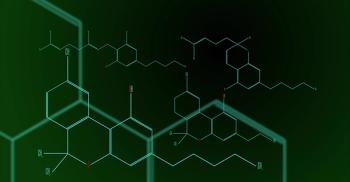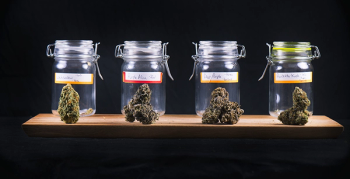
Part II of this series discusses how to measure absorbances properly, and compares the use of peak heights and peak areas in creating calibrations.

Part II of this series discusses how to measure absorbances properly, and compares the use of peak heights and peak areas in creating calibrations.

The various extract types are defined so there can be some consensus once and for all.

Here we discuss the importance of using standards that bracket the expected concentration range of standards in the unknowns, using the same chemical components in standards and unknowns, and making sure to minimize the error in concentration measurements of standards.

Part II of a guided tour through the protein structure and function influence of cannabinoid receptor 2 (CB2R) on cannabinoid signaling.

The new processed cannabis products continue to attract consumers—but black market influence causes hesitancy.

Terpenes can be tricky. Although cannabis is heavily regulated, since cannabis-derived terpenes do not contain tetrahydrocannabinol (THC) and other cannabinoids, they are not regulated in the same way that cannabis is.

A discussion on the selection of a “golden” potency method including what this method should look like, how we should go about choosing it, and more.

THC isomers are defined and discussed to better understand where they come from, how they are produced, and how they are being distributed.

How does the pharmaceutical industry test better to avoid mislabeling problems?

In part I of this series on statistical concepts related to cannabis analysis, we introduce the normal distribution, standard deviation, and how to calculate precision and accuracy.

Better seed genetics, power-free tunable lighting, and other new scientific discoveries are making headway in what has become an ag-tech leading industry.

Here, we explore the evolution and rise of color remediation methods in-line with extraction.

Dr. Denise Vidot shares some of her research findings that examine the impact of phytocannabinoids on multiple diseases.

This study presents bioassays for CBD, which can be used to assess the neurotrophic bioactivity of CBD formulations.

Medical cannabis patients and adult-use consumers alike are faced with an overwhelming amount of options when they first enter a dispensary. Across the industry, producers are looking for ways to simplify things for consumers. One company, Volunteer Botanicals, recently partnered with an investment group to create cannabidiol (CBD)-based tablets that also combine other cannabinoids and have the potential to create a unique consumer experience. In this interview, Jason Pickle, co-founder and chief sales officer for Volunteer Botanicals, sits down to discuss this recent product, the need for standardization throughout the cannabis industry, and more.

A closer look at the fundamental studies of tablet formation that are critical processes to ensure successful manufacturing of THC and CBD tablet dosage forms.

A recent article published by FiveThirtyEight (1) was highlighted on major news networks across the US, bringing attention to a very important issue facing the cannabis industry: how much tetrahydrocannabinol (THC) is actually in products. Here, we highlight some of the findings from the FiveThirtyEight report and what it means for the cannabis industry.

This column discusses where the USDA went wrong in their final rule regarding hemp and how the author thinks it can be fixed.

This work describes an inductively coupled plasma-mass spectrometry method for the analysis of various heavy metals in cannabis sativa plant material.

This article focuses on the technology being used in new rapid field tests that combine one-time-use color testing with a colorimetric panel that provides an identification and semiquantitation of THC and THCA.

Ric Cuchetto discusses the technology behind THC remediation and some of the challenges it presents.

A novel mid-infrared spectrometer that measures total THC in dried, ground cannabis plant material in 2 min is discussed as well as the applications of this analyzer for law enforcement, forensic laboratories, and regulatory agencies.

A closer look at some of the current in vitro evidence suggesting that cannabinoids possess potent activity against a range of gram-positive bacteria.

The U.S. Food and Drug Administration (FDA) recently released a draft guidance on developing cannabis-based drugs. These guidelines come weeks after the White House announced it had completed reviewing the draft guidance.

A large data set from Washington (140,000 flower samples) is scrutinized here for evidence of consistently propagated strains with higher than a 2-to-1 ratio.